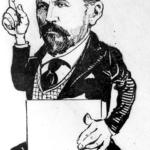
We saw the aurora, at midnight on Saturday morning.
I hadn’t heard anything about the solar storms until auroras were already happening all over the Ohio valley Friday night. My friends were posting photos of a bright purple aurora, over the farmland just north of here. It was visible in Hopedale and in Richmond and all over the Valley, but I couldn’t see it.
I kept ducking out of my to look at the sky, but all I saw was clouds. Then the sky cleared, gradually, leaving those few stars you can see with all the light pollution in LaBelle: Sirius but not the rest of Canis Major. Venus hanging low over the water tower. Parts of the Great Bear, over on the north side of the house. In the winter you can see Orion’s belt but not the Pleiades, shimmering to the south.
I remember reading in the myths of some Indegenous culture or other, that if the Pleiades don’t appear one autumn, no crops will be harvested and it’s the end of the world. I always think of that myth when I try to see the stars over Steubenville and the dimmer ones don’t appear. It’s always the end of the world in this part of town.
I ducked back in to look at the computer, and that’s when I noticed someone saying you had to be out in the countryside to see them. All the city light pollution was blocking our view. I went to get Adrienne, who was getting ready for bed, and the next thing I knew we were in the car.
Out we drove, through Steubenville where the lights of downtown mar the sky for miles, through Wintersville where the lights were still too bright, through Richmond where it started to get good and dark, almost to East Springfield in the middle of nowhere. The street lamps dwindled and disappeared. The speed limit went from thirty-five to fifty-five on the same two lane road, though I continued puttering at forty in case of a deer. The headlights caught bright yellow reflective arrows, warning me where the road took a sudden lurch and a turn and then another in the opposite direction. The moon, a blood red sliver, set between the hills. We ended up in the parking lot at the lake, which I found out later was closed from dusk to dawn, but nobody noticed or minded us.
We piled out of Serendipity, shivering, just after midnight. Adrienne had forgotten her jacket and put on Michael’s, which is far too long. I shut the door to Serendipity and locked it, which shut off all the lights, and we were plunged into total darkness. And then, we weren’t.
“Look how much lighter the sky is at the horizon,” said Adrienne.
We couldn’t exactly see the horizon, just the jagged edge where tree-covered hills touched cold navy sky. But everywhere just above us was black night, with a riot of stars clearly visible, and everywhere the hills met the sky was glowing blue- white. Not just to the north but to the south, east, west, the sky was blue-white.
At the beginning of April, I’d seen the eclipse, where the sun dimmed and twilight came without it turning into night. This was the opposite: a weird, eerie dawn on all horizons, without day. Night above me, morning on all sides, no sun to be seen, at midnight. The birds did not wake up. All was quiet, but nonetheless, it was morning.
There was not the great glorious light display that had been visible earlier, just that one miracle: bright white morning at the coldest and darkest hour of the night.
I looked straight up, and there were all the stars I don’t usually see: Corona Borealis up at the top of the sky, Virgo and Libra over the hill. The sky looked the way it does in a storybook, not the way it does in a city. Orion and the Pleiades had set, so I can’t tell you if it’s the end of the world or not.
I looked down to the strange sunless dawn glowing just over the trees, going from blue to rose and back.
It took half an hour to drive back to Steubenville.
I didn’t sleep at all the rest of the night.
Mary Pezzulo is the author of Meditations on the Way of the Cross, The Sorrows and Joys of Mary, and Stumbling into Grace: How We Meet God in Tiny Works of Mercy.













